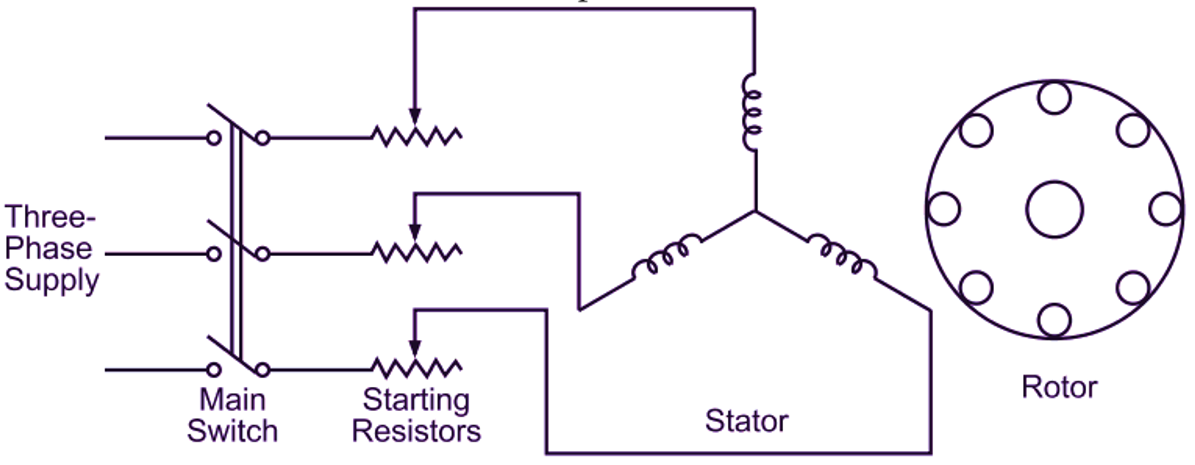In this topic, you study Stator Resistance Starter – Working & Diagram.
It essentially consists of a set of variable starting resistors. These resistors are connected in series with each phase of the stator winding during starting as illustrated in Fig. 1. Since, some voltage is dropped across the starting resistors, the voltage applied across the motor terminals is reduced. This in turn, reduces the starting current. As the motor picks up speed, the starting resistances are gradually cut off from all the phases of the stator winding. Finally, when the resistances are completely cut off, full voltage is applied across the motor terminals and motor attains its rated speed.

Fig. 1: Stator resistance starter
This type of starter is simple in construction and cheap. It is useful for both Star and delta connected motors. However, because of the large power loss involved in the starting resistors, it is used for smooth starting of small motors only.